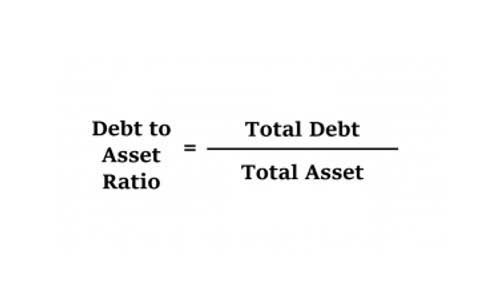
Different industries have different levels of capital intensity and thus different levels of depreciation. Salvage value is the estimated value of an asset at the end of its useful life. It represents the amount that a company could sell the asset for after it has been fully depreciated.
What are some factors that can impact after-tax salvage value?
- The salvage price of the asset and scrap value calculation are based on the original price and depreciation rate.
- This method also calculates depreciation expenses based on the depreciable amount.
- Companies take into consideration the matching principle when making assumptions for asset depreciation and salvage value.
- This carrying value serves as an essential indicator of an asset’s remaining value on the company’s balance sheet.
- For example, if a construction company can sell an inoperable crane for parts at a price of $5,000, that is the crane’s salvage value.
Let’s say the company assumes each vehicle will have a salvage value of $5,000. This means that of the $250,000 the company paid, the company expects to recover $40,000 at the end of the useful life. The salvage or the residual value is the book value of an asset after all the depreciation has been fully expired.
How can businesses use after-tax salvage value in decision-making?
By considering the after-tax salvage value, businesses can make strategic decisions about whether to sell an asset or continue using it. This calculation helps in evaluating the net benefit of disposing of an asset versus keeping it in operation. Furthermore, salvage value also aids in strategic decision-making related to the potential sale of depreciated assets for parts.

Depreciation and After-Tax Salvage Value Assumptions
It helps businesses and individuals estimate the net cash flow they will receive when disposing of an asset after taking into account the applicable tax consequences. In this article, we’ll walk you through the process of calculating the after tax salvage value. When calculating depreciation in your balance sheet, an asset’s salvage value is subtracted from its initial cost to determine total depreciation over the asset’s useful life. Depreciation and amortization are accounting practices that allow a company to write down the value of its tangible and intangible assets, respectively, over their useful life. Depletion, which is most common in the energy and raw materials industries, allocates the cost of extracting natural resources, such as oil or minerals, from the earth. Stock-based compensation refers to the payment of employees, typically executives, through non-cash means, such as shares of stock or stock options in that company.

The current machinery, accounting after years of service, is approaching the end of its useful life. You’re faced with the decision of whether to sell it or keep it until it becomes obsolete. To make an informed choice, you need to calculate the after-tax salvage value of the equipment, which will significantly impact your company’s financial statements and tax liabilities. This guide aims to demystify the concept of after-tax salvage value, illustrating its importance in financial decision-making and providing a step-by-step process to calculate it accurately. Calculating after tax salvage value is an essential aspect of managing assets and making informed financial decisions for businesses and individuals alike.

How to calculate after-tax salvage value?
The disposal value, also known as gross proceeds, is the amount received when selling or disposing an asset. The first step is to determine this value by determining market prices for similar assets, referencing professional appraisals, or negotiating with potential buyers. Incorporating a robust ERP system like virtual accountant Deskera can significantly enhance how businesses manage and calculate salvage value. Deskera ERP provides comprehensive asset management features that streamline the tracking, depreciation, and eventual disposal of assets. Also integrating an AI mechanism like ERP.ai to your ERP system can make it smarter by enhancing enterprise process, data governance & decision-making. Salvage value can be considered the price a company could get for something when it’s all used up.
- The impact of the salvage (residual) value assumption on the annual depreciation of the asset is as follows.
- A non-cash charge is an accounting term for expenses that a company is able to write down on its balance sheet but that do not involve an actual cash outflow.
- The useful life assumption estimates the number of years an asset is expected to remain productive and generate revenue.
- If a company believes an item will be useful for a long time and make money for them, they might say it has a long useful life.
- Yes, salvage value can be considered the selling price that a company can expect to receive for an asset at the end of its life.
- To appropriately depreciate these assets, the company would depreciate the net of the cost and salvage value over the useful life of the assets.
- Older assets with shorter remaining useful lives generally have lower salvage values.
- Selling expenses reduce the net selling price of the asset, which in turn affects the gain or loss on the sale and ultimately the after-tax salvage value.
- It is calculated by adding back non-cash charges, such as amortization, depreciation, restructuring costs, and impairment, to net income.
- The after tax salvage value online calculator provides us the after-tax value of the salvage of the asset.
The after-tax salvage value is the net value of an asset after it has been sold and all related taxes have been deducted. It is a critical component in assessing the profitability of an investment and the financial impact of disposing of an asset. Salvage value is a concept that holds significant importance in the world of business. This value plays a crucial role in financial decision-making as it affects various aspects such as depreciation, asset disposal, and capital budgeting. Understanding the definition and significance of salvage value helps business owners and managers make informed choices and plan for the future. In the following sections, we will explore the exact meaning of salvage value and delve into its relevance in business operations.
What happens if taxes are not taken into account when calculating salvage value?
Most businesses opt for the straight-line method, which recognizes a uniform depreciation expense over the asset’s useful life. Understanding and calculating the after-tax salvage value of an asset is essential for accurate financial reporting and strategic decision-making. Utilizing methods like the straight-line method and considering elements such as asset condition and market after tax salvage formula demand, companies can make informed decisions about asset disposal and replacement. This comprehensive approach ensures effective financial management and optimized resource allocation. Next, subtract any selling expenses from the selling price to get the net selling price.3.

What Is Cash Flow After Taxes? (CFAT)

If a company is still determining how long something will be useful, they might guess a shorter time and say it’s worth more at the end (higher salvage value) to keep it on their books longer. Or, if they want to show more expenses early on, they might use a method that makes the item lose more value at the beginning (accelerated depreciation). Some companies say an item is worth nothing (salvage value of $0) because they think it has paid for itself by making money over time. Calculating the after-tax salvage value is crucial for businesses to accurately assess the financial impact of selling their assets. When calculating depreciation, an asset’s salvage value is subtracted from its initial cost to determine total depreciation over the asset’s useful life. From there, accountants have several options to calculate each year’s depreciation.
